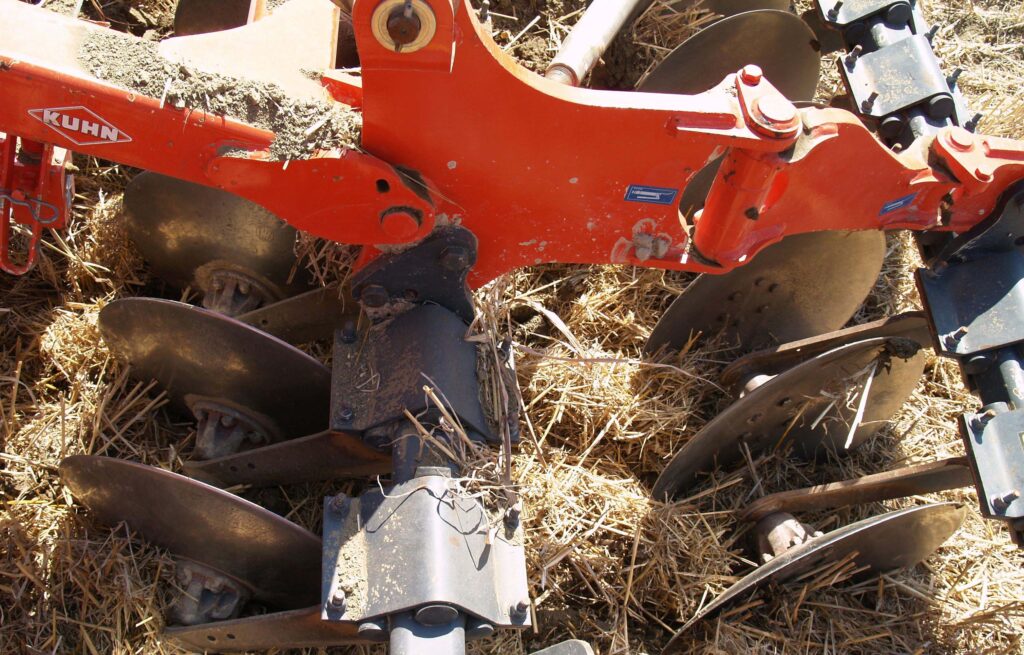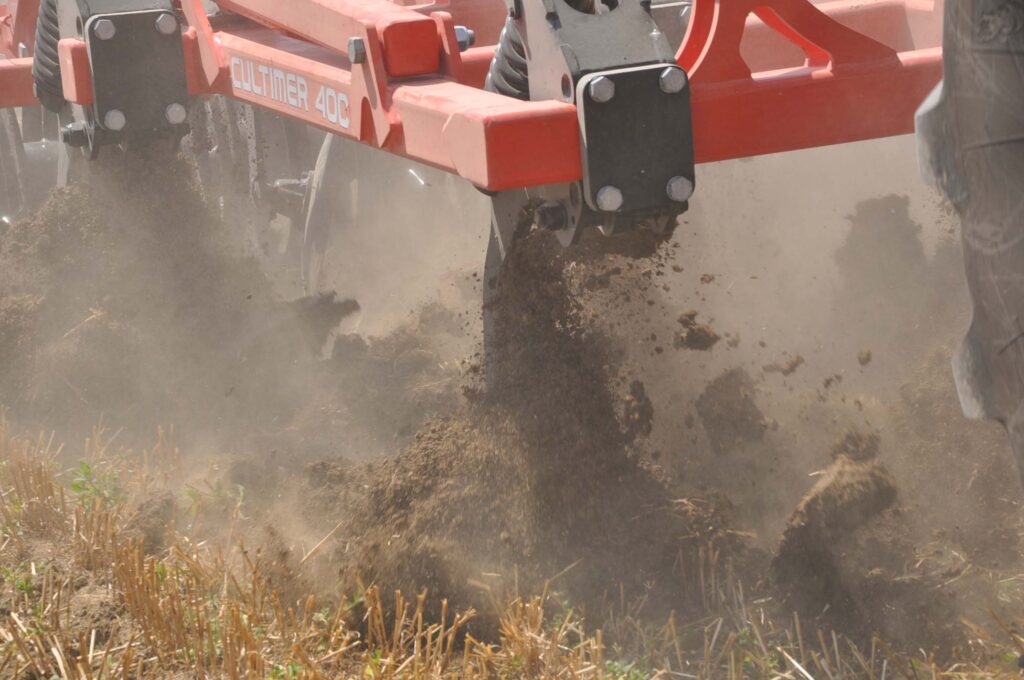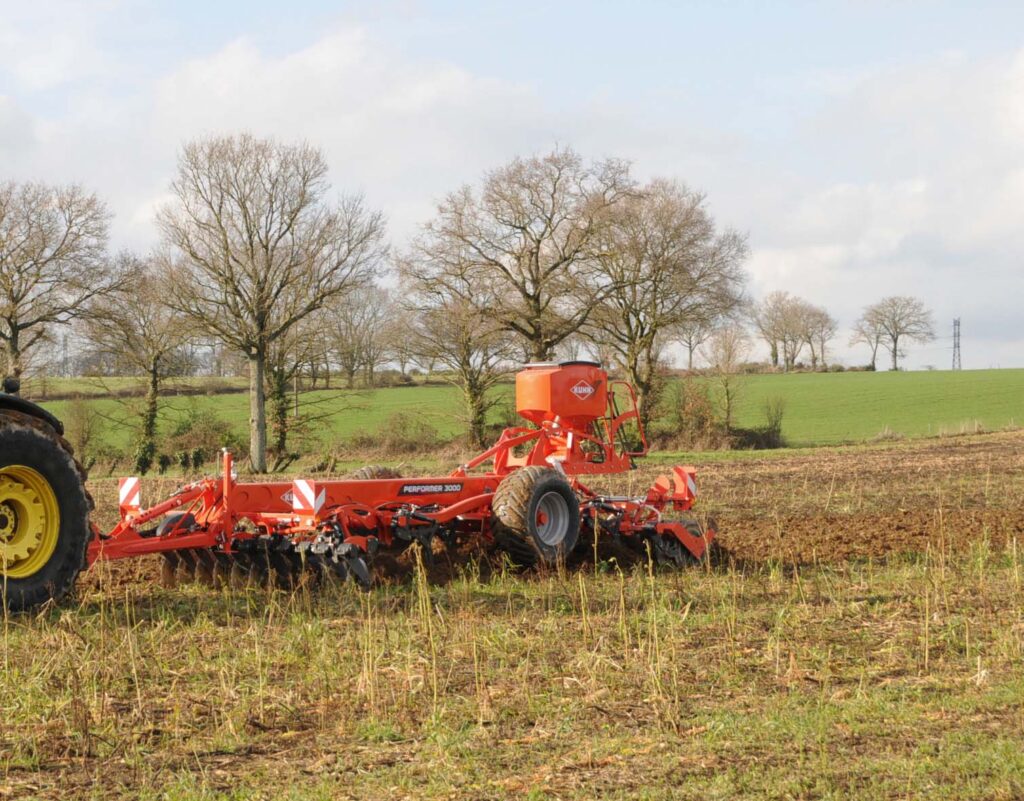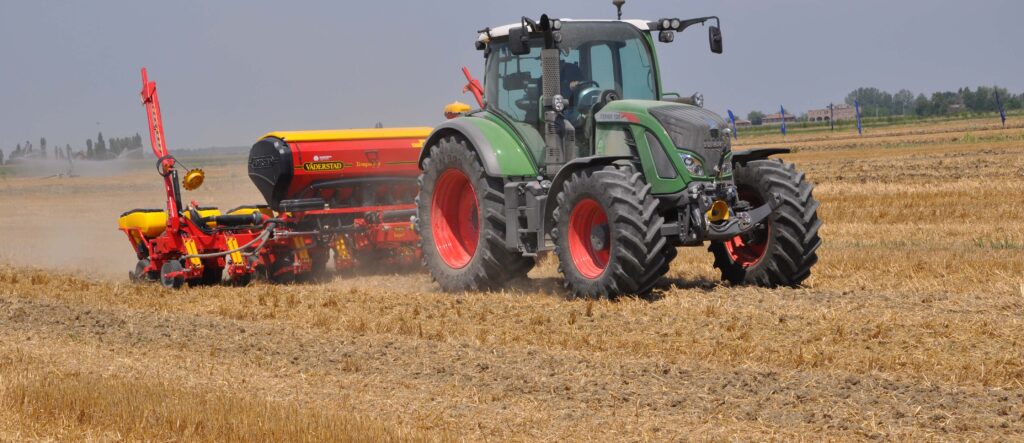Recent scientific knowledge has shown that it is necessary to reduce the disturbance of the soil and therefore the intensity and invasiveness of every single intervention.
Today the farmer has at his disposal a wide range of equipment that allows him to work the soil as and when needed; he also has at his disposal instruments of investigation and knowledge that allow him to understand what can be useful to the soil and to the crop he will have to host.
In order to choose the interventions to be carried out, the canonical approach, which is still valid, is to know which crop and which processes have been practiced at least in the last year, to probe the current state of the soil by analyzing its surface and investigating the degree of compaction of the deeper layers, to know the crop that will follow and to hypothesize those that will follow in the subsequent years.
However, the functions attributed today to soil tillage are very different from those of the past. The advancement of scientific knowledge has shown how necessary it is to reduce the soil disturbance and therefore the intensity and invasiveness of every single intervention and a general reduction in the number of interventions itself or, more correctly expressed, of the energy applied annually to the working of a given area.
Another consideration concerns the adoption of a rotation of processes that follows hand in hand that of the crops. This approach, adopted in the agronomy of the Sixties and Seventies when the distinction between renewal, improving and depleting crops, was very important, has been lost in the following years. It had thus become frequent to see the slavish application of the same processes regardless of the crop for which they were made. Today the recommended tillage for corn and sunflower are different from those for beet, which in turn are different from those for soybeans, and these from those for cereals or autumn sowing grasslands, etc.

Harrow with independent discs designed for surface soil tillage, excellent in summer soil management and in mechanical weeding of young weeds, and in false sowing techniques (Kuhn)
A third consideration, which is obvious, concerns the availability of very effective herbicides that can allow us, if considered appropriate, to replace or modify mechanical intervention in its application. Even the development achieved by fertilization and the current availability of mineral fertilizers have affected the working of the soil, making unnecessary the harmful mixing of the soil which, among other things, had the aim of making the nutrient reserves hidden in the organic substance available to the crop.
Today the strong aims that motivate the working of the soil are:
- management of crop residue and overlying vegetation (weeds or cover crop), leveling of ruts and preparation of the seedbed;
- restoration of conditions of porosity, gas exchange, oxygenation, water infiltration, connection with the deeper layers of the soil.
[su_box title=”Presence of cover crops” box_color=”#43634b”]In this case it is necessary to foresee its devitalization that can be mechanical or chemical. In the first case it can be carried out with blade rollers or shredders; in the second with non-selective herbicides such as glyphosate. The latter alternative should be preferred when the soil is humid and not very load-bearing, taking care to use trailed sprayers, able to reduce the load on the soil. These interventions are better to be done before the sowing of the spring crop so that the vegetation can dry up. It should be considered that the presence of a vegetation cover, especially if dead, reduces evaporation favoring the maintenance of a moist (and colder) layer. Despite the progressive increase in potential evapotranspiration, the rains that often characterize this period can make it difficult to reach udometric conditions that allow to perform even a superficial work. This, however, if you do not operate in a no-till seeding regime, is only necessary in the presence of cover crops, while it can be avoided (or anticipated to winter) in their absence, taking advantage of the effects of the work carried out in the summer-autumn period.[/su_box]
Obviously, the first point requires one or more interventions limited to the most superficial layer of the soil (never below 15 cm and in many cases limited to 4-5 cm of depth), while the second point refers to deep interventions carried out not more than once a year. These are in fact the reasons that justify the interventions on the soil and are so different from each other that they must be pursued separately and always with different equipment. It is then possible that in unusual contexts or that specific cultivation needs or the application of different cultivation techniques require dedicated interventions. Particular cases are no-tillage (sowing on hard soil); strip-tillage processing; ridge till crops (e.g. on corn); bed cultivation (many horticultural crops for fresh and non-fresh consumption) or ridge till cultivation (e.g. potatoes). The last three require training and, in some cases, the subsequent maintenance of cultivation plans that are raised above ground level.
Surface tillage
In irrigated farms, after the harvest of autumn-winter cereals or spring grass, the soil must be quickly prepared for the second harvest. When conditions allow it, it is definitely advantageous to resort to no-till seeding or very superficial tillage, carried out with independent disk harrows of small diameter, to reduce the interference of the residue with the sowing element, favor the deposition of the seed in the soil, stop the capillary rising of water, bury any mineral or organic fertilizers.

In the presence of fields marked by ruts, the use of anchor cultivators should be preferred because they are able to operate deeper than discs, to break up compacted surface soil better, to mix the crop residue (Kuhn)
In non-irrigated farms, the second harvest is difficult to implement, especially if the first harvest lasts between the end of June and July, and therefore in a period in which rain events are infrequent. The second harvest can be attempted if the soil is still characterized by a good water content. In this case, a (very) superficial tillage, which can only be carried out with disks, can interrupt the capillary rise in order to store the water reserves still present, and allow the deposition of the seed at a greater depth, at the level of the still moist soil layer.
It is easier to realize the second harvest (especially in non-irrigated farms) after grasses, such as ryegrass, or feeding grains, such as wheat, secale, barley and triticale, harvested either at the beginning of the earing as a fibrous herbage, or at waxy ripening as an energy herbage. In these cases, in fact, the harvesting period is decidedly earlier than that of the grains, and this fact increases the probability that rain events will occur immediately after sowing such as to ensure the release of the crop.
On the other hand, when the second harvest does not take place, it is necessary to manage the soil until the next sowing, which can take place between the end of summer and late autumn or even the following spring. More precisely, for autumn sowings, in the South we wait for the first rains, while in the North it is sometimes better to anticipate the sowings before the arrival of the rain to avoid finding the soil impracticable for several weeks, since the rainy events can repeat themselves to the point of maintaining a moisture content in the soil incompatible with transit. In this case, during the summer it is advisable to carry out an extremely superficial and fast processing as soon as possible, if the ground is free of ruts, in order to interrupt the capillary rise and favor the decomposition of the residue. The most suitable tool is obviously the disc. During the summer, if weeds emerge, they must be devitalized before they go to seed, even with a quick passage of the harrow; if the weeds are developed, it is better to use anchor tools with foot equipped with wings. In this case the working depth is 2-5 cm and in any case such as to ensure that the tip and the wings of the anchor hoe intercept the beginning of the weed root system so that they can hook the plant tearing it from the ground (which is the typical action of the grubber). Thus, the rapid devitalization of the weed and the formation of biopores in the soil are obtained.

Example of minimal and conservative tillage with simultaneous distribution of the seed of a cover crop (Kuhn)
The anchors of a light cultivator should also be preferred when the field is furrowed by evident ruts, due to the excellent volumizing and disintegrating action of the soil (but still respectful of the soil aggregates).
If the following crop is sown in spring, it is advisable to implement a cover crop, broadcast sown, between the end of summer and the end of winter, and provide for the execution of deep tillage before sowing (if and in the ways necessary) intended for the following crop. In fact, in spring there are not always the conditions to carry out deep working that require the achievement of the state of tilth along the entire profile involved in the work.
In all equipment that can be used in superficial tillage, the rear roller can play a fundamental role not only in stabilizing the equipment and governing the working depth, but also in the action carried out on the soil. This action can be a disintegrating one, generally limited to the most voluminous residual clods, a settling one, reducing the air incorporated in the soil and thus reducing evaporation and oxidation, a levelling action of the surface profile, a fixing action of the crop residue in the first two or three centimeters of soil.
The presence of ruts, especially if pronounced, require the execution of a decompaction intervention and, even in the absence of obvious signs, there may be the convenience of performing a deep intervention to restore porosity. In fact, deep processing almost always accompanies the superficial ones. Their analysis, however, deserves more space and for this reason they will be the subject of a space dedicated to them in the next issue.
Lorenzo Benvenuti



